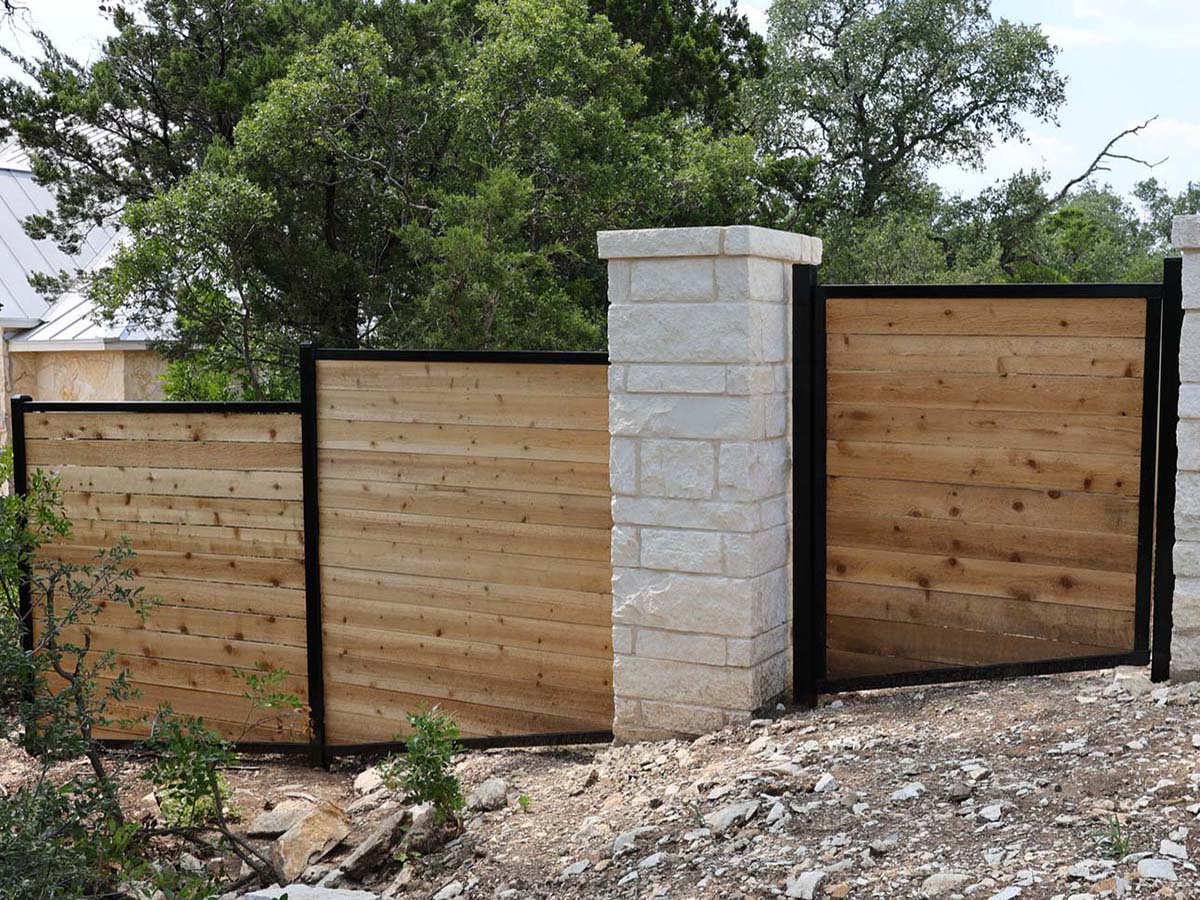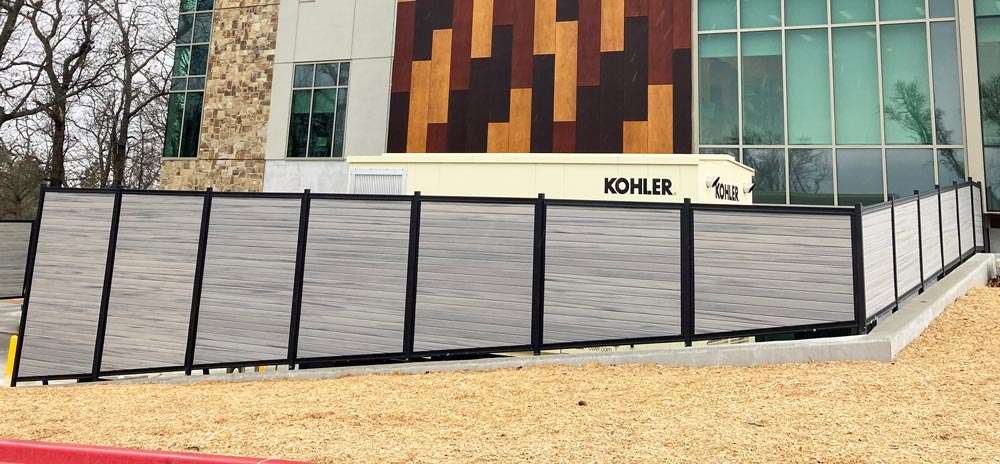All Categories
Featured

As sustainability becomes an expanding concern for house owners and businesses, the demand for environment-friendly structure materials prolongs to exterior areas, including fences. Typical secure fencing products such as wood, vinyl, and steel can have substantial environmental influences, from deforestation to chemical treatments and plastic waste.
- Bamboo Fence. Bamboo is one of one of the most lasting materials on the market, and it is significantly made use of in fencing building due to its fast growth and toughness. Unlike hardwood trees, bamboo is a lawn that can expand back completely within just a few years, making it very eco-friendly. It's normally resistant to insects and rot, which suggests it does not call for harsh chemicals or treatments, making it an environmentally friendly option.

Perks: Bamboo fences are durable, low-maintenance, and biodegradable. They are naturally resistant to termites and moisture, minimizing the requirement for chemical preservatives. Additionally, bamboo helps in reducing soil disintegration due to its deep origin systems. Considerations: Bamboo can be a lot more expensive than some typical timber fencing choices, and it may not be ideal for locations with severe cool or freezing temperatures, as it can become weak gradually. 2. Recycled Materials Fencing. Many producers now offer fencings made from post-consumer plastic, recycled wood, or also repurposed metal. Several composite products, for instance, are made from recycled plastic bottles, timber scraps, and other materials that would otherwise be disposed of.
Advantages: Recycled product fences aid save natural resources, decrease contamination, and lower the environmental impact of the production procedure. They can likewise provide impressive durability, withstanding degeneration, mold, and termites. Considerations: While recycled material fencings are extremely resilient and environment-friendly, they might not have the exact same natural visual that some house owners seek. Suppliers currently provide designs that imitate the look of wood or rock. 3. Composite Fence. Composite secure fencing is made from a mix of wood fibers and plastic, usually integrating recycled products. This mix creates a very sturdy, low-maintenance fence that does not call for regular paint or staining, making it a sustainable option. Composite fencings are resistant to rot, bugs, and weathering, which suggests they can last for several years without the need for regular replacements.

Conveniences: Compound fences are lasting and can withstand severe climate condition, decreasing the demand for replacements or repair work. Considering that composite materials commonly consist of recycled web content, they assist reduce plastic waste. Furthermore, they do not need hazardous chemicals or treatments. Factors to consider: Composite fencings can have a greater in advance price than typical timber or plastic, though their durability and lowered maintenance costs usually make them a much more economical alternative in the future. 4. Living Fences. Living fencings, also recognized as hedgerows, are an environmentally friendly and visually pleasing option that involves planting dense shrubs, trees, or climbing up plants along your building line to produce a natural barrier. Popular plants for living fences include boxwood, privet, and holly. These plants can be expanded to supply privacy, windbreaks, and noise decrease while contributing to environmental health.
Benefits: Living fences promote biodiversity, improve air top quality, and take in co2, making them one of one of the most green fence choices. They additionally supply an all-natural habitat for birds and insects and can lower environmental pollution and help regulate temperatures in your lawn. Factors to consider: Living fencings need regular upkeep, such as cutting, watering, and in some cases pest control. They additionally take some time to develop and might not give prompt personal privacy compared to strong timber or plastic fences. 5. Cedar and Redwood Fencing. Cedar and redwood are popular natural timber alternatives for fencings. These materials are normally immune and durable to rot, pests, and moisture, which suggests they commonly don't call for the usage of dangerous chemical therapies. When sourced from sustainably handled woodlands, cedar and redwood fences can be an ecologically friendly choice that provides both appeal and durability.
Advantages: These woods are eco-friendly, sustainable, and deal excellent toughness and natural charm. Cedar and redwood additionally have a lower ecological influence when gathered sensibly, making them an environmentally friendly selection for several homeowners. Considerations: While cedar and redwood fencings have environmental advantages, they do still require occasional maintenance and are much more pricey than various other wood alternatives. It is essential to make sure that the timber is sourced from sustainable woodlands to optimize its environmental benefits. 6. Rock and Brick Fence (Redeemed) Rock and block fences are low-maintenance and unbelievably resilient, and they can be environmentally friendly when made from recovered materials. Redeemed stone and block are frequently recovered from old buildings or building and construction projects, decreasing waste and saving all-natural resources. These materials use a classic look and are very resistant to weathering, making them a lasting service for fencing.
Conveniences: Recovered rock and block are resilient, visually pleasing, and require minimal maintenance. By repurposing these materials, you help in reducing the demand for new sources and reduce waste in garbage dumps. Factors to consider: The installation of stone and brick fences can be labor-intensive and more expensive contrasted to various other materials, yet their durability and low maintenance demands can make them cost-effective in the future. Final thought. Eco-friendly fencing choices are not only great for the environment yet likewise supply resilience, low maintenance, and visual appeal. Whether you go with bamboo, recycled products, composite fence, living fencings, or sustainable timber like cedar and redwood, there are lots of methods to lower your ecological impact while enhancing your residential or commercial property's look. By choosing these eco-conscious materials, you can add to a much healthier earth and produce an outside space that mirrors your values.
Latest Posts
Boost Your Building with Automatic Gates from Washington Fence
Published Apr 19, 25
2 min read
The Perfect Flooring for Every Home
Published Apr 19, 25
1 min read
Meet the Experts Behind Montclare Auto Repair - Committed to Excellence
Published Apr 19, 25
2 min read